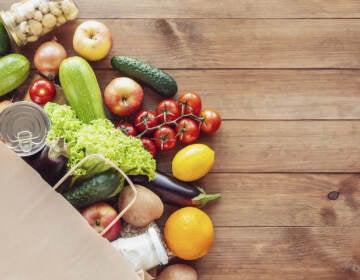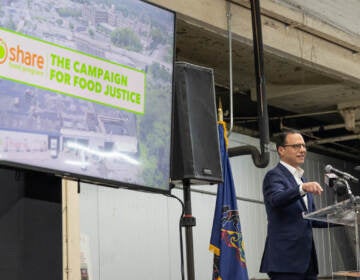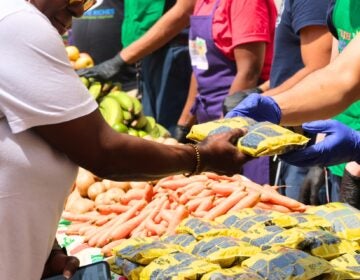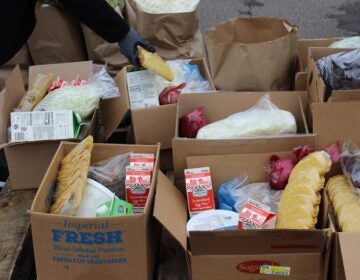More than 28% of Black Philadelphians face food insecurity. Philabundance wants to fix that
Food insecurity in the region has jumped nearly 8% in three years, and 67% of residents live below the threshold for SNAP benefits.
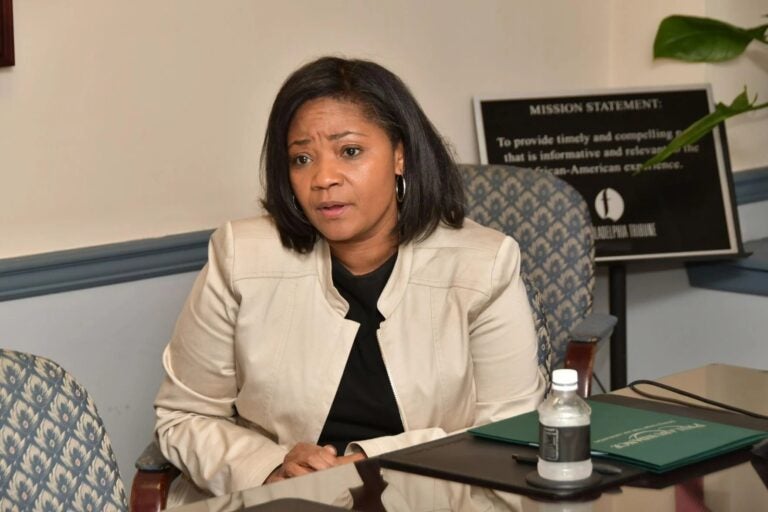
Philabundance CEO Loree Jones-Brown shown addressing reporters during an editorial board meeting at The Philadelphia Tribune. (TRIBUNE PHOTO / ABDUL SULAYMAN)
This story originally appeared in The Philadelphia Tribune.
More than 28% of Black Philadelphians faced food insecurity in 2022.
Overall, food insecurity in the region jumped from 13.6% to 21.2% in three years.
And 67% of area residents live below the 200% threshold for the Supplemental Nutrition Assistance Program, also known as SNAP.
These startling statistics from Feeding America are why Philabundance, an arm of the national nonprofit, has spent the last 40 years working to help local residents struggling with food insecurity.
“It’s one of the reasons why, as a food bank, and as our partners across the country, we advocate for supports like SNAP and WIC [Women, Infants and Children], and we encourage government to make those programs available, but also make them easier for people to access,” said Philabundance CEO Loree Jones-Brown in an interview with The Philadelphia Tribune. “The reality is, what we are all hoping for is an environment, where in a world where people can make those choices for themselves.”
Jones-Brown noted that the level of food insecurity in the region is the highest it’s been since the Great Recession in 2008.
Over the years, Philabundance has worked with its 350 partners across the region to expand its work as a food bank. The organization offered 42 million meals last year and addressed the root cause of hunger and poverty through a myriad of programs and workshops.
On par with its mission is its 16-week culinary arts vocational training and meal production program. The initiative aims to promote self-sufficiency to able bodied, low-income adults through culinary training and placement in a commercial kitchen setting while dually preparing meals to organizations in collaboration with Philabundance to alleviate hunger.
Since its inception, there has been a cohort of 1,000 students that work in kitchens across the city at senior centers and working as interns at restaurants, halfway houses and more.
“One of the things that we did coming out of this pandemic is we put out what we call our ‘good food policy,’” Jones-Brown said. “[Food insecure individuals] fared far worse during the pandemic because of the social determinants of health and not having access to healthy foods.”
Jones-Brown said 85% of the food that goes out to pantries by Philabundance’s standards has either medium or high nutritional value.
Philabundance has partnered with the American Heart Association and the Metropolitan Area Neighborhood Nutrition Alliance, also known as MANNA, to provide food for birthing people, where they choose medically tailored meals that MANNA could provide, healthy meals provided at its community kitchen or free groceries.
The traditional option that Philabundance provides is meals, or food vouchers, to provide the food either at a grocery store or delivered from a grocery store.
Philadelphia City Council created a task force in March on food insecurity to “study and develop proposals, strategies, and recommendations to alleviate hunger and increase access to high quality food in the city.” Within a year of its inaugural meeting, the task force will convene to present a report on its findings and its recommendations to address and alleviate food insecurity in Philadelphia.
“That leads me here to another thing that has changed at Philabundance is that we are increasingly listening to the voice of people,” Jones-Brown said. “It’s more what our neighbors are like.
“Our motto is people, people experiencing food insecurity are at the center of what we do,” she said. “We exist for and about them, not just to run an organization that makes sense to us.”

Get daily updates from WHYY News!
WHYY is your source for fact-based, in-depth journalism and information. As a nonprofit organization, we rely on financial support from readers like you. Please give today.


